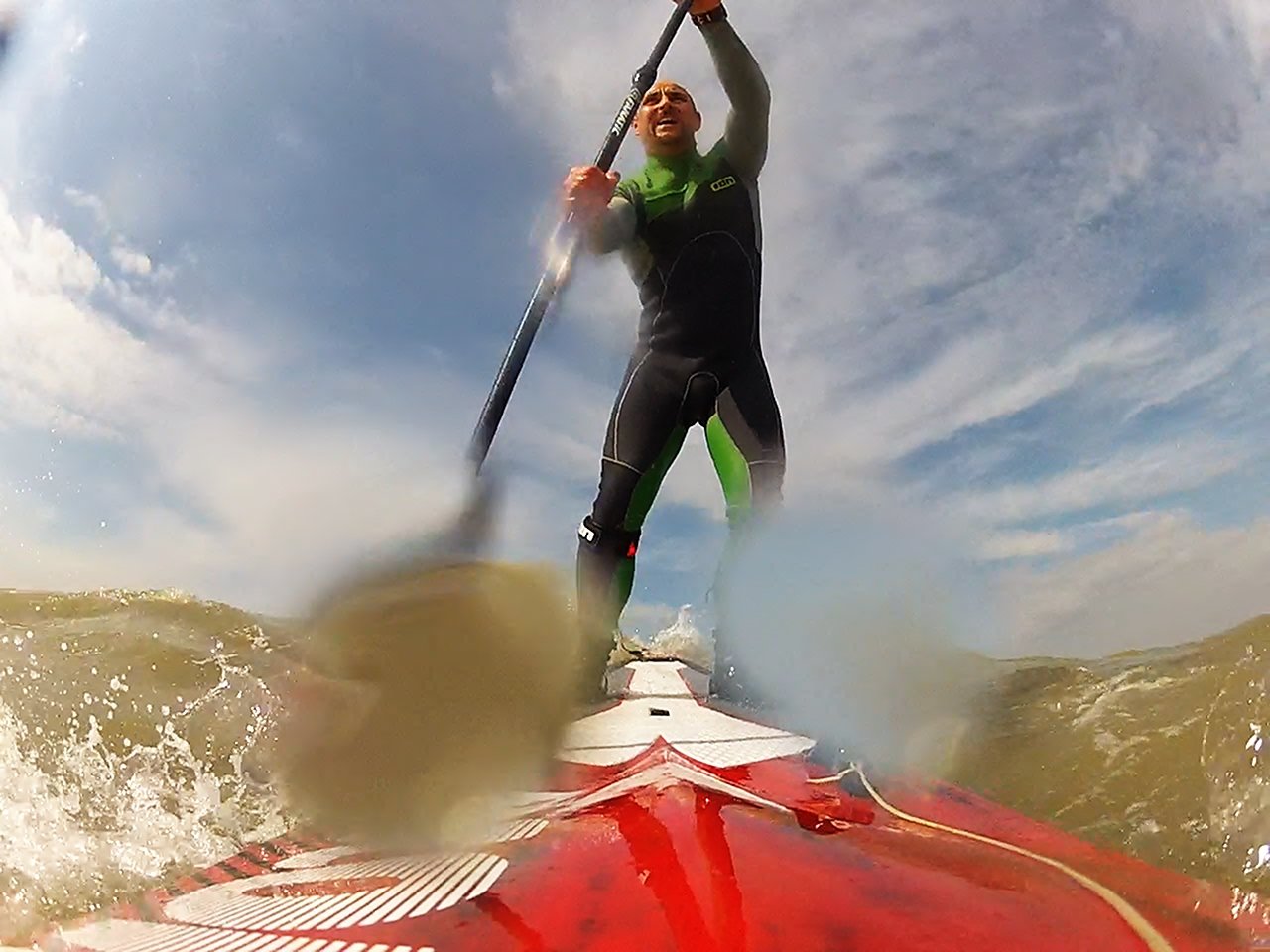Its Downwind Season!!!
 Stand Up Paddle boarding is seen by many as a fair weather sport, something for when the wind is slight and the sun is beaming. However there is a growing band of SUPers in the UK who are getting their thrills from taking their boards out in conditions that are normally the domain of windsurfers and kite surfers.Downwinding is basically the art of paddling down wind; a concept that many of you will be familiar with. Lets face it, paddling down wind (with the wind on your back) is the preferred direction for most. How many really enjoy that upwind slog????? The Idea is to surf the wind-generated swell connecting the bumps as you go.There are different degrees of down winding, ranging from the leisurely 'drift back down wind after a cruise', to exhilarating balls to the wall surfing of ocean swells in strong winds. Downwinding is open to anyone, you just have to be sensible about your own capabilities, equipment and level of support.The UK can have some pretty awesome downwind conditions. You don't have to jet off to Maui and you don't even have to paddle exposed coastal stretches, as this Inland downwind edit from Charlie Grey, shot just a couple of weeks ago, proves.https://www.youtube.com/watch?v=sqUCwHxh5RgSafety Safety in Down-winding is paramount. Don't underestimate the power of the ocean especially when combined with strong winds. If you get this wrong you could get into trouble very quickly.Here are my golden rules for downwinding.
Stand Up Paddle boarding is seen by many as a fair weather sport, something for when the wind is slight and the sun is beaming. However there is a growing band of SUPers in the UK who are getting their thrills from taking their boards out in conditions that are normally the domain of windsurfers and kite surfers.Downwinding is basically the art of paddling down wind; a concept that many of you will be familiar with. Lets face it, paddling down wind (with the wind on your back) is the preferred direction for most. How many really enjoy that upwind slog????? The Idea is to surf the wind-generated swell connecting the bumps as you go.There are different degrees of down winding, ranging from the leisurely 'drift back down wind after a cruise', to exhilarating balls to the wall surfing of ocean swells in strong winds. Downwinding is open to anyone, you just have to be sensible about your own capabilities, equipment and level of support.The UK can have some pretty awesome downwind conditions. You don't have to jet off to Maui and you don't even have to paddle exposed coastal stretches, as this Inland downwind edit from Charlie Grey, shot just a couple of weeks ago, proves.https://www.youtube.com/watch?v=sqUCwHxh5RgSafety Safety in Down-winding is paramount. Don't underestimate the power of the ocean especially when combined with strong winds. If you get this wrong you could get into trouble very quickly.Here are my golden rules for downwinding.
- Always wear a leash!!!! and ensure it is securely attached to your board. This is so important! Your board is your flotation and your leash your life line. Never paddle without it! It is all too easy for you to get separated from your board and if that happens you are in a world of trouble.
- Paddle with friends who are experienced paddlers. Find a group and tag along. They will be able to advise you on conditions suitable to your skill level and support you along the way.
- If you don't think you can handle it, don't go out! Remember the conditions never look as rough from land as they do from the water.
- Understand the route you are taking. Where are the put in and take out points? is there anywhere you can stop and rest if you need to, or be extracted in case of emergency. What are the tides doing and will they help or hinder you if you get into trouble? There are plenty of awesome inland routes for those who are new to downwinding, or if the conditions on the sea are too full on.
- Consider the use of a Personal Flotation Device (PFD) this could be a life saver.
- Make sure you are hydrated and fueled and if its a long trip take more along with you. Don't underestimate how tiring downwind paddling can be. The instability of the board combined with sprint paddling to catch the next swell can be draining.
- Make sure someone knows where you are, what you are doing and when to expect you back.
- Dress appropriately a wetsuit or dry suit should be considered for down-winding in the UK.
The BoardAny board over the 11ft mark can be good for downwinding. Although to really get the best performance a longer all-round race or touring board would be the way to go. Flatter rockered boards may be more prone to 'pearling', when the nose dives under water. The longer boards will make it easier to catch those swells and if you really catch the Downwind bug, specific down wind boards are available.TechniqueThe clip bellow is a pretty cool, on-board clip containing some easy to understand tips to improve your downwinding skillshttps://youtu.be/iduGEB1OXzISo now you know where to paddle, who to paddle with and how to paddle safely; so what are you waiting for?Escape Your Cave and give it a go!!!Don't forget to post pictures and video to Facebook and Instagram with the #escapeyourcaveAnd Click on Here to view the Cave Active Store
